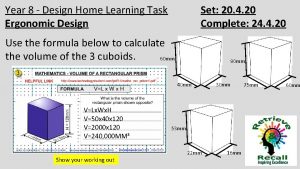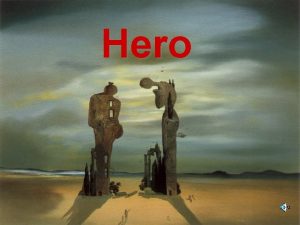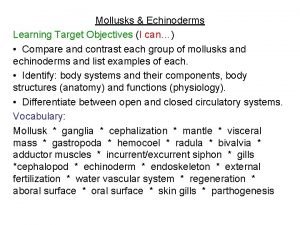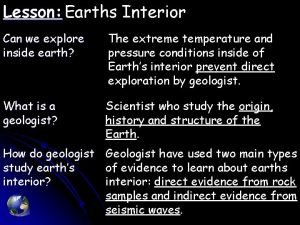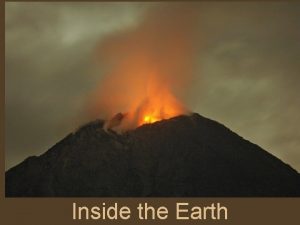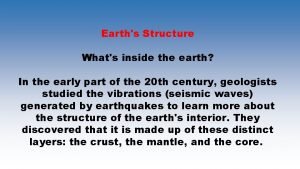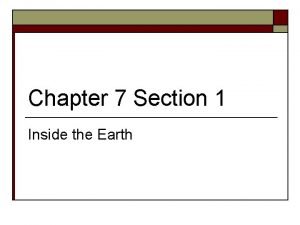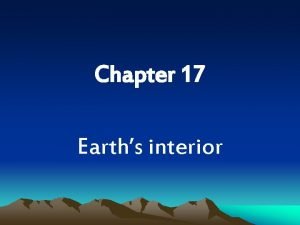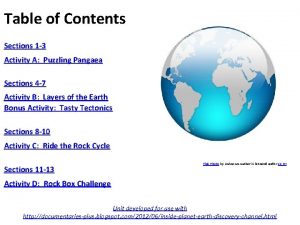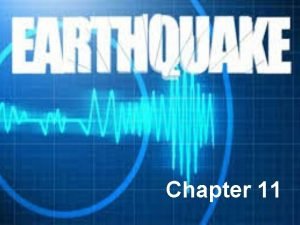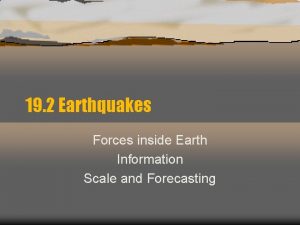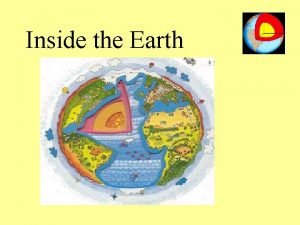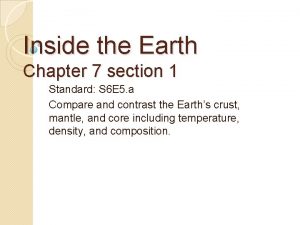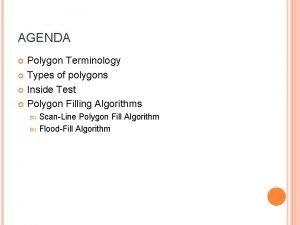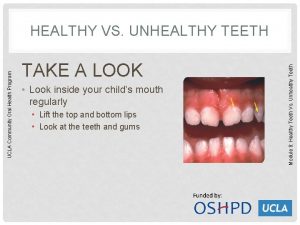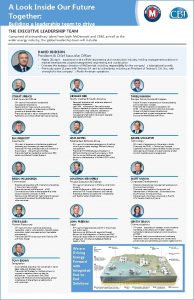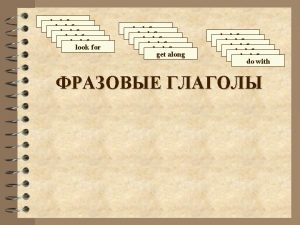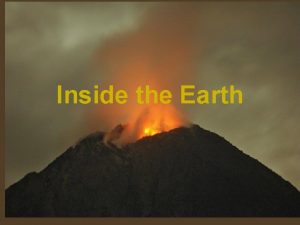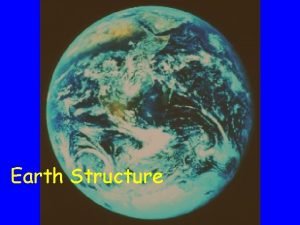A Look Inside the Earth Our Earth not























- Slides: 23

A Look Inside the Earth

Our Earth – not a solid ball of rock – composed of distinct layers – layers based on composition and physical properties

Layers Based on Composition a. Crust b. Mantle c. Core – the lightest materials (less molecules) make up the outer layers – the densest materials (more molecules) make up the inner layers

• CRUST Layers Based on Composition – outermost layer of the Earth – thinnest layer (5 -100 km thick) – two types of crust * continental (contains the Earth’s continents; thickest type of the crust; similar to granite) * oceanic (found under the ocean; thinnest type of crust; similar to basalt)

At its thickest, our crust is about the same as the distance from our school to Frankenmuth.

Crust video • https: //www. youtube. com/watch? v=f. Cye. EJ Ba 4 KE • Do not watch this right now. We are watching in class.

Layers Based on Composition • MANTLE – layer between the crust and core – thickness (2900 km) – contains most of the Earth’s mass (67%) – similar to olivine (consistency of silly putty); flows very slowly

The distance from the top of the mantle to the bottom is about the same as the distance from our school to Las Vegas, Nevada.

• CORE Layers Based on Composition – the innermost part of the Earth – about the size of Mars (6856 km in diameter) – 33% of Earth’s mass – very dense; composed of iron and smaller amounts of nickel

Our Earth’s core is about the size of Mars.

Three Layers Videos • https: //www. youtube. com/watch? v=EJVO 1 v. Ee. Qw • DO watch this one- 5 minutes long • As you watch write down 5 facts that you learn or think are interesting on the back of your note paper

Layers Based on Composition Can you think of any other foods that are good example of Earth’s interior layers based on composition? • Cherry • Peach • Avocado • Peanut M&M Why not an apple?

Layers Based on Physical Properties a. Lithosphere b. Asthenosphere c. Mesosphere d. Outer Core e. Inner Core

Layers Based on Physical Properties • LITHOSPHERE – outermost rigid layer – made of crust and rigid part of the mantle – divided into pieces called tectonic plates – 15 -300 km thick

At its thickest, our Earth’s lithosphere is about the same as the distance between our school and Cedar Point

Layers Based on Physical Properties • ASTHENOSPHERE – soft layer of the mantle – lithosphere floats on top of it – flows like thick putty – about 250 km thick

Layers Based on Physical Properties • MESOSPHERE – extends from the bottom of the asthenosphere to the outer core – “middle sphere” – about 2250 km thick

The distance from the top of the mesosphere to the bottom is about the same as the distance from our school to Austin, Texas.

Layers Based on Physical Properties • OUTER CORE – liquid iron and nickel – surrounds the inner core – about 2200 km thick – where the Earth’s magnetic field is generated

Layers Based on Physical Properties • INNER CORE – solid – very dense; composed of iron and nickel – 10, 832 degrees Fahrenheit – 6, 378 km below Earth’s surface – 1, 228 km in diameter

Inner and Outer Core video • https: //www. youtube. com/watch? v=DW 4 x Wyi. Qd. SM • DO watch this one- 5 minutes long. • As you watch write down 5 facts that you learn or think are interesting on the back of your note paper

Our Earth’s inner core is about the size of Charon, one of Pluto’s moons. Charon Pluto Earth’s Moon

Layers of Earth video • https: //www. youtube. com/watch? v=NAHY 6965 o 08 • DO watch this one- 6 minutes long • As you watch write down 5 facts that you learn or think are interesting on the back of your note paper
 Look to the left look to the right
Look to the left look to the right Learning task 2 look around your home
Learning task 2 look around your home There's a hero inside of you
There's a hero inside of you What does the inside of a human stomach look like
What does the inside of a human stomach look like Starfish face
Starfish face Let's look inside
Let's look inside Inside of water tower
Inside of water tower Sudden and violent but brief; fitful; intermittent
Sudden and violent but brief; fitful; intermittent Why is the inside of the earth hot
Why is the inside of the earth hot Dense ball of solid metal
Dense ball of solid metal Whats inside the earth
Whats inside the earth Chapter 7 section 1 inside the earth answer key
Chapter 7 section 1 inside the earth answer key Chapter 7 section 1 inside the earth answer key
Chapter 7 section 1 inside the earth answer key Produced from the heat inside the earth
Produced from the heat inside the earth Inside planet earth video worksheet answers
Inside planet earth video worksheet answers Forces inside earth
Forces inside earth Forces
Forces The layers of the earth from innermost to outermost
The layers of the earth from innermost to outermost Chapter 7 section 1 inside the earth answer key
Chapter 7 section 1 inside the earth answer key Is a method for testing a pixel inside of a polygon.
Is a method for testing a pixel inside of a polygon. Activity 3.picture analysis
Activity 3.picture analysis Activity 1: look at the picture and complete the sentences:
Activity 1: look at the picture and complete the sentences: Activity 1 look out
Activity 1 look out Macbeth look how our partner's rapt
Macbeth look how our partner's rapt

